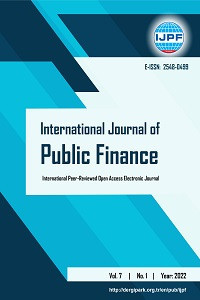Enhancing the Shariah Governance Framework for Malaysian IFIs through Effective Management Strategies
The Shariah Governance Framework (SGF) in Malaysia has approached its fifth year of implementation by Malaysian Islamic Financial Institutions (IFIs). In ensuring its continuous effectiveness as well as in enhancing the governance robustness, any existing gaps must be tackled and resolved proficiently. Among the gaps recorded in the previous literatures directed to various areas such as the commitment of Shariah Governance body or management team towards its governance, Shariah Committee (SC) portfolio, competency, regulatory framework and so forth. This research paper explores the practical adoption which could be applied through theoretical analysis and viable recommendation for further enhancement of the SGF by all management teams in the IFIs. In complementing this study, a set of questionnaires is distributed to some selected group of staff in a Takaful Operator (TO) in Malaysia to gauge their understanding of the subject matter.
Anahtar Kelimeler:
Shariah Governance Framework (SGF), Effective Management, Islamic Financial Institutions (IFIs)
Enhancing the Shariah Governance Framework for Malaysian IFIs through Effective Management Strategies
The Shariah Governance Framework (SGF) in Malaysia has approached its fifth year of implementation by Malaysian Islamic Financial Institutions (IFIs). In ensuring its continuous effectiveness as well as in enhancing the governance robustness, any existing gaps must be tackled and resolved proficiently. Among the gaps recorded in the previous literatures directed to various areas such as the commitment of Shariah Governance body or management team towards its governance, Shariah Committee (SC) portfolio, competency, regulatory framework and so forth. This research paper explores the practical adoption which could be applied through theoretical analysis and viable recommendation for further enhancement of the SGF by all management teams in the IFIs. In complementing this study, a set of questionnaires is distributed to some selected group of staff in a Takaful Operator (TO) in Malaysia to gauge their understanding of the subject matter.
Keywords:
Shariah Governance Framework (SGF), Effective Management, Islamic Financial Institutions (IFIs),
___
- Abd. Majid, M. S., & H. Kassim, S. (2015). “Assessing the contribution of Islamic finance to economic growth: Empirical evidence from Malaysia”. Journal of Islamic Accounting and Business Research, 6(2), 292-310.
- Alanazi, T. R., Alharthey, B. K., & Rasli, A. (2013). “Overview of path-goal leadership theory”. Sains Humanika, 64(2).
- Farook, S., & Farooq, M. O. (2013). “Shariah Governance, Expertise and Profession: Educational Challenges in Islamic Finance”. ISRA International Journal of Islamic Finance, 5(1), 137-160.
- Grassa, R. (2013). “Shariah Supervisory System in Islamic Financial Institutions: New Issues And Challenges: A Comparative Analysis Between Southeast Asia Models And GCC Models”. Humanomics, 29(4), 333-348.
- Hamza, H. (2013). “Sharia governance in Islamic banks: Effectiveness and Supervision Model”. International Journal of Islamic and Middle Eastern Finance and Management, 6(3), 226-237.
- Hersey, P. (1997). “Situational Leadership”. In DEAN’S FORUM (Vol. 12, No. 2, p. 5).
- Ismail, N. A., & Razak, S. H. A. (2014). “Shariah Governance Framework Gaps and Issues”.Islamic Financial Services Board (IFSB)
- Kurke, L. B., & Aldrich, H. E. (1983). “Note—Mintzberg was Right! A Replication and Extension of the Nature of Managerial Work”. Management Science, 29(8), 975-984.
- Landrum, N. E., Daily, C. M., & Vjin, S. (2012). “Corporate accountability: A path-goal perspective”. International Journal of Business Insights and Transformation, 4(3).
- Malkawi, B. H. (2013). “Shari'ah Board in the Governance Structure of Islamic Financial Institutions”. Am. J. Comp. L., 61, 539.
- Nathan Garas, S., & Pierce, C. (2010). “Shari'a Supervision of Islamic Financial Institutions”. Journal of Financial Regulation and Compliance, 18(4), 386-407.
- NuHtay, S. N., & Salman, S. A. (2013). “Comparative Analysis on AAOIFI, IFSB and BNM Shari'ah Governance Guidelines”. International Journal of Business and Social Science, 4(15).
- Othman, Hassan (2014), Omar, Napiah, Ariffin, Yusoff, Khatimin & Zaharim, (2013). “Shariah Governance for Islamic Financial Institutions in Malaysia on the Independency of Shariah Committee and Efficiency of Its Shariah Decisions”. Recent Advances in Management, Marketing and Finances.
- Proctor, T., & Doukakis, I. (2003). “Change Management: The Role of Internal Communication and Employee Development”. Corporate Communications: An International Journal, 8(4), 268-277.
- Wren, D. A., & Bedeian, A. G. (1994). “The Evolution of Management Thought”.
- Yukl, G. (1982). “Managerial Leadership and the Effective Principal”.
- Beck, C. E. (1999). Managerial communication: Bridging Theory and Practice. Prentice Hall.
- Goodson, J. R., McGee, G. W., & Cashman, J. F. (1989). Situational Leadership Theory A Test of Leadership Prescriptions. Group & Organization Management, 14(4), 446-461.
- Howell, J. P., & Costley, D. L. (2006). 2nd Edition. Understanding Behaviors for Effective Leadership. Prentice Hall.
- Level, D. A., & Galle, W. P. (1988). Managerial Communications. Business Publications.
- O'Rourke, J. S. (2012). Management Communication. Pearson Higher Ed.pp.3-5
- Porter, C., Simmonds, D., & Bingham, C. (2008). Exploring human resource management. McGraw-Hill Higher Education.Williams, C. (2009). Management 5e.
- Malaysia, B. N. (2010). Shariah Governance Framework for Islamic Financial Institutions. Bank Negara Malaysia, Kuala Lumpur.
- Olum, Y. (2004). Modern Management Theories and Practices. Uganda: Makerere University.
- Pfeffer, J. (1995). Producing Sustainable Competitive Advantage through the Effective Management of People. The Academy of Management Executive, 9(1), 55-69.
- Stapledon, G. P., & Stapledon, G. P. (1997). Institutional Shareholders and Corporate Governance. Oxford University Press.
- Malaysia International Islamic Financial Centre (MIFC), www.mifc.com. Insights Issued on 27 February 2014.
- Yayın Aralığı: Yılda 2 Sayı
- Başlangıç: 2016
- Yayıncı: Adnan GERÇEK
Sayıdaki Diğer Makaleler
The Remission of Tax Penalties and Its Effectiveness in Turkey
Veraset ve İntikal Vergisinde Revizyon Gerekliliği
Devletin Hacmini Belirleyen Faktörler: Ampirik bir Analiz
Nazlı KEYİFLİ, Sacit Hadi AKDEDE
Türkiye’de Maliye Alanında Yapılmış Lisansüstü Tezlerin Bibliyometrik Analizi (2003-2017)
Uluslararası Sermaye Yatırımlarının Vergilendirilmesinde Tarafsızlık İlkesi
